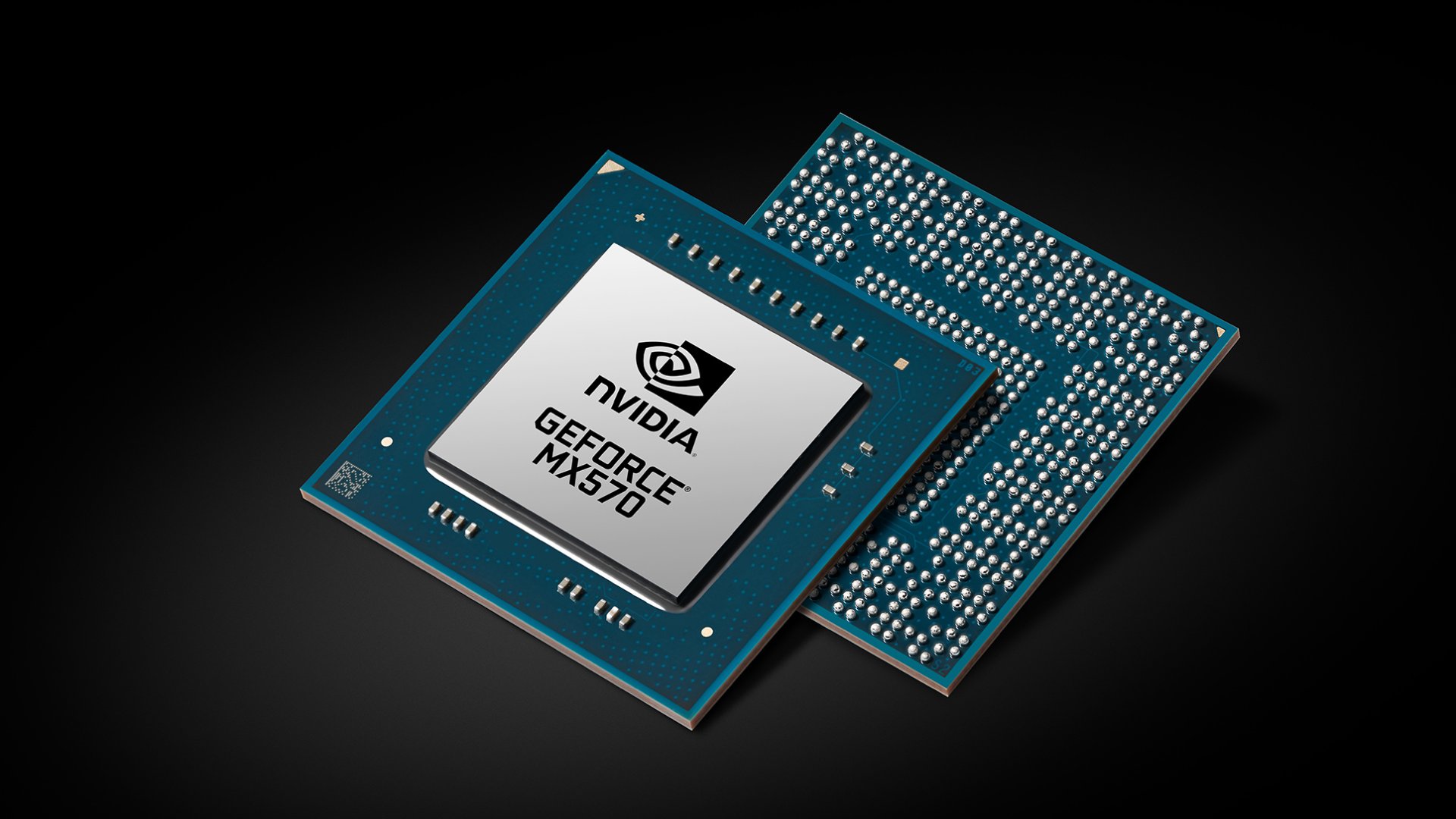
Squeezed from below by APUs and above by the RTX 4050, the rumours are that Nvidia is killing the discrete MX chips.
Nvidia is reportedly abandoning its MX entry-level mobile graphics chips. This is very much in the realm of rumour, but this one predicting the death of Nvidia’s weakest notebook chip does make a lot of sense.
The MX line has been not only Nvidia’s cheapest and lowest-performing series of GPUs for laptops but also its lowest power option. However, with both Intel and AMD increasing the performance of their integrated graphics over successive generations, the MX is being pinched. From below and above.
At the other end of the scale, Nvidia’s upcoming RTX 4050 mobile chip is expected to maintain its RTX 3050 predecessor’s minimum 35W power profile. Factor in both those APUs and a 35W RTX 4050 and the result is a very narrow window in which any Nvidia MX chip can operate.
Currently, the MX line tops out with the MX570. It’s based on the GA107 GPU and sports 2,048 CUDA cores, a 1,155MHz boost clock, and a rather skinny 64-bit memory bus. Its peak 4.7 TFLOPS shader performance represents a pretty yawning shortfall versus the 8.9 TFLOPS of the fastest Radeon 780M integrated graphics in AMD’s latest Ryzen 7040 Series APUs for laptops.
While the MX570 at 25W is lower power than the like of the RTX 4050, it’s also higher power than the 15W rating of that integrated Radeon graphics. From there, the MX line falls off awfully rapidly.
The MX570 is the only member of the MX family based on Ampere-generation technology. The next-tier MX550 drops down to a Turing-based TU117 chip with just 1,024 CUDA cores and 2.7TFLOPS of raw shader performance.
For the record, the mobile RTX 4050 is expected to use the upcoming AD107 GPU with 2,560 CUDA cores, a 1,755MHz boost clock, and a 96-bit memory bus for a grand total of 9TFLOPS of raw shader power. So, even that doesn’t offer a raw shader power uptick over the AMD APU, even if we expect it will deliver superior real-world gaming performance.
Anyway, given the cost and complexity of adding a discrete GPU to a laptop, the marginal if any benefit of the MX line versus the latest integrated graphics certainly makes for a terminal narrative. There’s just no space left for Nvidia’s littlest mobile GPU.



